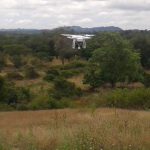 Drones may have received a lot of publicity for their work in urban areas carrying packages to and fro, but to date they have probably had the most impact in remote areas, especially doing conservation work.
Drones may have received a lot of publicity for their work in urban areas carrying packages to and fro, but to date they have probably had the most impact in remote areas, especially doing conservation work.
This is exemplified by a recent paper, which describes the use of drones to undertake important butterfly work. The drones are used to capture high-res images that provide the kind of information that could previously only have been garnered by laborious field work. The data has allowed German scientists to predict suitable habitats for an endangered species of butterfly.
Sensitive to change
Butterflies are particularly sensitive to changes in their environment, and for butterflies to survive in an area, it’s crucial that their larvae can develop successfully. The drones were used to capture the microclimate of two declining butterfly species.
“The high resolution of just a few centimeters per pixel—made possible by low-altitude overflights—provides information of microhabitat structures over a relatively large area,” the researchers say.
Microhabitats are crucial for butterfly larvae and they tend to differ from the habitats of adult butterflies. The team hope that the information they gather of these microhabitats can then be applied at a landscape level.
The analysis involved a drone flying over the area to take high-resolution snapshots. A prior analysis had identified suitable spots for egg deposition, and this data was used to train the drones so that they could find other suitable microhabitats for the butterfly larvae.
Scaling up
By using this approach, they were able to spot suitable locations in minute detail with an accuracy of around 80%. When the locations were examined by the research team, they did indeed find a large number of butterfly eggs.
The project is interesting as it joins a number of similar ventures that are using relatively standard images to infer increasingly advanced things, whether it’s light pollution or the health of crops.
The team believe that the method can prove invaluable in expanding the scope of ecological research, and thus make conservation efforts more efficient and effective.
“Our study also demonstrates that the entire life cycle of organisms, such as butterflies, should be taken into consideration when making recommendations for conservation measures”, the authors say “because the study shows how sensitively organisms react, even to minimal changes.”
So, whilst urban drones might continue to garner headlines, it seems likely that more remote applications of the technology such as this will deliver the best results for society.
Wow, Nice ideas, Missing those amazing creatures, Happy to know that you guys doing this much of things for their preservation. Good work, Keep going